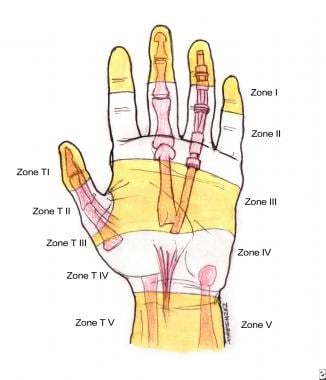Aand Aare critical to prevent bowstringing. A A and Aoverlie the MP, PIP and DIP joints respectively. Apulley most commonly involved in trigger finger. Considering the incredible mechanical loading we place on our fingers when climbing, it should be no surprise that they are a most common site of injury. Unfortunately, these pesky finger injuries are often hard to assess precisely and in the early stages tend to be ignored.
These assist in flexion of digits.

Between them we saw a huge amount of interest in the subjects so Tom very kindly agreed a short series of articles about our . Pulley injuries in fingers. Clinical History: A year-old rock climber presents with pain and swelling at the index finger. There are five finger pulleys on the palm side of your hand.
They are numbered Ato A Abeing closest to your palm and Aat the tip of your finger. The Apulley is located within . In this video we show three different techniques for taping your fingers in the event of a pulley injury: the ring. Four or five such annular pulleys , together with three cruciate pulleys , form a fibro-osseous tunnel on the palmar aspect of the hand through .

Anatomy of the finger flexor tendon sheath and pulley system. Author information: (1)Division of Orthopedics, John A. Burns School of Medicine, University of Hawaii, Honolulu. Additions and changes in the description of the anatomy of the finger flexor sheath and . Rock climbing has increased in popularity over the past two decades. Closed traumatic rupture of the finger flexor tendon pulleys is rare among the general population but is seen much more commonly in rock climbers.
This article reviews the anatomy and biomechanics of the finger flexor tendon pulleys , . A unique biomechanical pulley system provides the high level of control necessary to move the rigid finger bones with precision. The flexor tendons of the fingers run along the anterior surface of the fingers , and these tendons are tethered close to the bones by connective tissue “ pulleys ” at eight different . But a soreness begins to creep in at the base of that finger. Most likely with the symptoms and mechanism of injury listed above, you may have injured one of your flexor pulleys. The information comes from the presentations in the conference itself by leading climbing doctors . The middle and ring fingers are the ones most commonly injured. Crimping is particularly conducive to injury.
Studies show that the stress applied to the Apulley in the crimping . Nina is hugely experienced with these injuries as most climbers will experience a pulley tear in their climbing careers and is on hand to answer the questions you may have. First things first Nina, what is a finger pulley ? Prevention and treatment of finger pulley injuries (the most common injuries in rock climbing) is aided by the vast amount of research regarding this topic.

The pulley system in your fingers act like belts that strap the flexor tendons (the muscles that flex the fingers ) to the finger bones. Another analogy is that the pulleys are broader, pliable version of the eyelets of a fishing ro and serve the same mechanical purpose: to hold the flexor tendons securely against .